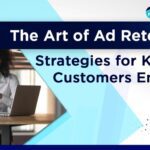Crafting a content strategy for e-commerce is instrumental in fostering connections with the audience and acquiring customers.
Brands ought to concentrate on meeting the unique requirements of their target audience by addressing their queries and addressing concerns. This approach fundamentally facilitates customers in navigating their path to completing a purchase.
To assist you in this endeavor we got some tips from experts.
What is E-commerce Content Marketing?
E-commerce content marketing aims to assist customers throughout their buying process, ultimately boosting online sales.
A successful strategy seamlessly incorporates valuable content across the entire customer journey, ensuring that potential buyers can access pertinent information whenever they need it, via the appropriate channel.
Valuable e-commerce content stands out by the benefits it offers to its audience. Some instances of valuable e-commerce content encompass:
- Video guides explaining product functionality.
- High-quality product images.
- Online forums for obtaining answers to inquiries.
- Search engine-optimized blog posts addressing topics of interest to buyers.
Why is E-commerce Content Marketing Important?
Based on our 2023 research findings, 96% of e-commerce and retail companies have achieved favorable outcomes in attaining their content marketing objectives. Crafting and disseminating valuable, free content plays a pivotal role in establishing trust with prospective buyers.
Moreover, this approach fosters continued engagement with customers, providing them with content they can readily share on social media. When e-commerce brands consistently provide valuable content without expecting reciprocation, readers are inclined to respond by becoming devoted customers.
In the following section, we will delve into eight strategies for achieving success in e-commerce content marketing.
Ensure Your Content is Visually Appealing
In e-commerce, the significance of visual content surpasses that of other industries, primarily because buyers typically desire a comprehensive view of the products they intend to purchase.
Whether it’s through videos or still images showcasing a product in action, these visuals offer buyers valuable insights into the product’s quality and suitability. This is precisely why numerous top-notch e-commerce marketers direct their content marketing endeavors toward crafting top-quality videos.
Double Down on the Channel that Works Best for You
Creating successful content is a long-term commitment, so content creators should identify the channel they are most comfortable with for producing a substantial amount of content.
There are several potential channels to consider:
- Blogs: They allow you to share lists, guides, thought leadership, and more, catering to various audiences at different stages of the buyer’s journey.
- YouTube: Establishing a presence on YouTube helps humanize your brand and showcase your expertise.
- Instagram: Whether you’re creating brief stories or longer-form Reels, Instagram serves as an effective platform for connecting with a broader audience through social media.
- LinkedIn: Widely recognized as a business-focused platform, LinkedIn is an excellent social channel for discovering and connecting with the professionals you aim to engage with.
Use Video to Build Your Brand Character
E-commerce revolves around products, and video emerges as a powerful tool for presenting your products, illustrating their advantages, and addressing key inquiries.
Our research findings for 2023 underscore that video stands out as the most impactful content format for retail and e-commerce enterprises. Notable categories of video content encompass:
- Product explainer and description videos.
- Customer testimonial videos.
- Live shopping videos.
Typically, longer videos find their home on YouTube channels, while shorter ones are commonly shared on platforms like Instagram.
Optimize Your Presence on Amazon
Many individuals in search of specific products often begin their quest on Amazon rather than using search engines like Google, especially when they have a purchase in mind.
Consequently, it is imperative for companies to meticulously oversee all content associated with their products on Amazon, ensuring it closely aligns with their website and overall brand identity. Failing to do so may result in potential buyers opting for a competitor’s product instead.
Amazon has broadened the range of content options available to brands, moving beyond the basic title, description, and product images. This expansion includes:
- A+ content: A premium feature that enables sellers to enhance the description and presentation of their products by incorporating more comprehensive text, high-definition videos, and images.
- Amazon Posts: Another avenue for brands to engage with customers and promote their products on the platform.
Partner with Influencers and Experts
Earlier, we highlighted the crucial role played by individuals (personalities) in e-commerce content marketing. In certain cases, the founders themselves take on this role.
However, for other retailers, partnering with industry experts can be a highly effective choice, primarily because it signals to Google that your content carries authority.
For instance, fashion brands can collaborate with social media influencers or bloggers, while health and wellness brands can team up with doctors or nutritionists. These collaborations serve as notable examples.
Pay Attention to the Marketing Tactics of Marketplaces
An e-commerce marketplace comprises a gathering of online stores that offer a wide range of products from various vendors.
These marketplaces function as virtual hubs for shoppers seeking to explore and buy from numerous brands, much like traditional markets in the physical world.
Brands that engage in these marketplaces establish their digital “storefronts.” Some notable examples include:
- Amazon Marketplace
- Walmart Marketplace
- eBay
- Chewy
- Wayfair
- Rakuten
- Houzz
Explore Live Shopping and Lookbooks
In the realm of fashion e-commerce, there’s a growing trend toward using “lookbooks” instead of traditional blogs.
Lookbooks essentially digitized the concept of printed promotional catalogs that retailers used to produce for in-store perusal long before the advent of e-commerce. Nowadays, online retailers employ lookbooks to visually present their products enticingly.
Fashion brands frequently release lookbooks for new seasons or product lines. These lookbooks can take various forms, including:
- Scrollable carousels featuring images of models showcasing key items from featured collections.
- Short videos depicting models wearing outfits from specific collections.
- Live videos showing people shopping and creating outfits.
- Even blogs with explanatory content, like one highlighting intriguing staircase designs.
Live shopping videos are also gaining popularity, particularly in China and now in the United States. They play a significant role in content marketing efforts by fashion and beauty brands. Allowing viewers to make direct purchases during live streams is a savvy move, as it capitalizes on the excitement generated by influencers in real-time.
Make SEO a Central Part of Your Plan
Despite the considerable emphasis on visual content, numerous e-commerce websites have missed the potential benefits of traditional text-based content marketing.
Nevertheless, it is imperative to incorporate educational blog content creation and search engine optimization into your strategy. These elements should be regarded as essential components of your approach.
Conclusion
The objective of e-commerce content marketing is to assist customers throughout their buying journey and boost a brand’s online sales.
E-commerce content marketing differs from other content marketing methods in several key ways:
- It places a stronger emphasis on visual content compared to traditional text formats.
- Its audience may initiate their purchasing journey on platforms like Amazon rather than conventional search engines like Google, though Google still plays a crucial role.
- Highly successful brands utilize personalities, especially through video content, and establish credibility through collaborations with experts.
- Traditional SEO and text-based formats, such as educational blog posts, are sometimes overlooked, offering opportunities for brands aiming for high rankings.
Therefore, creating content for e-commerce websites necessitates a comprehensive approach that strikes a balance between visual and text-based content.





